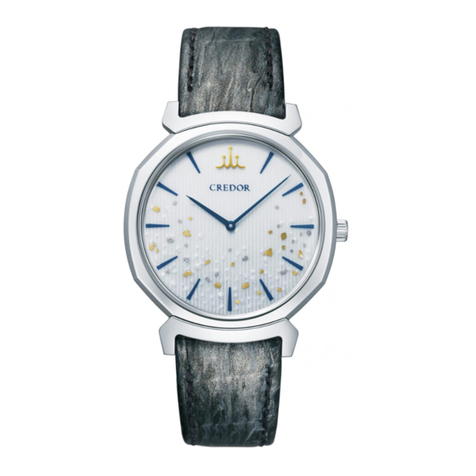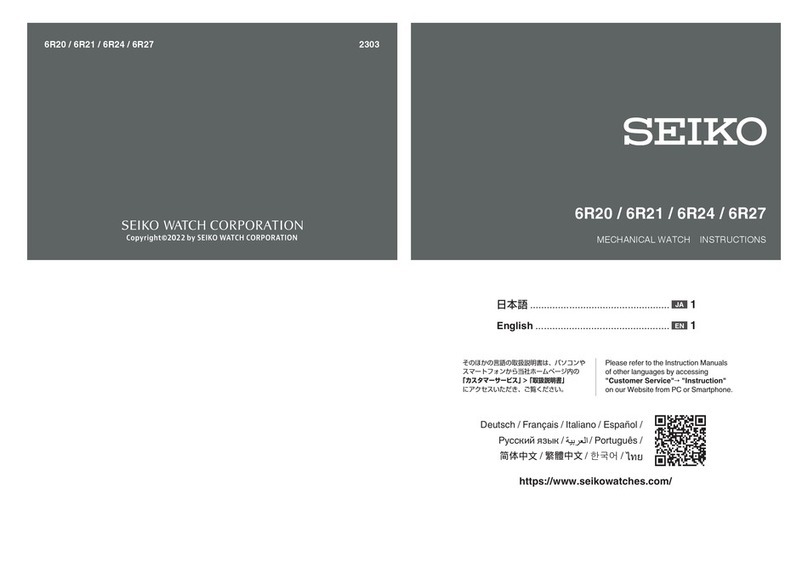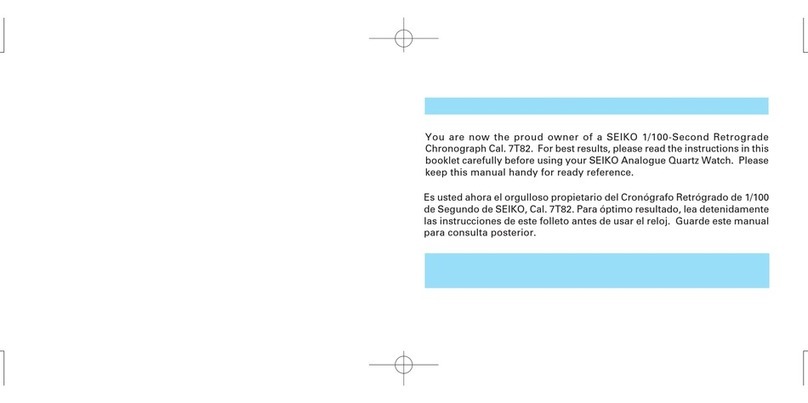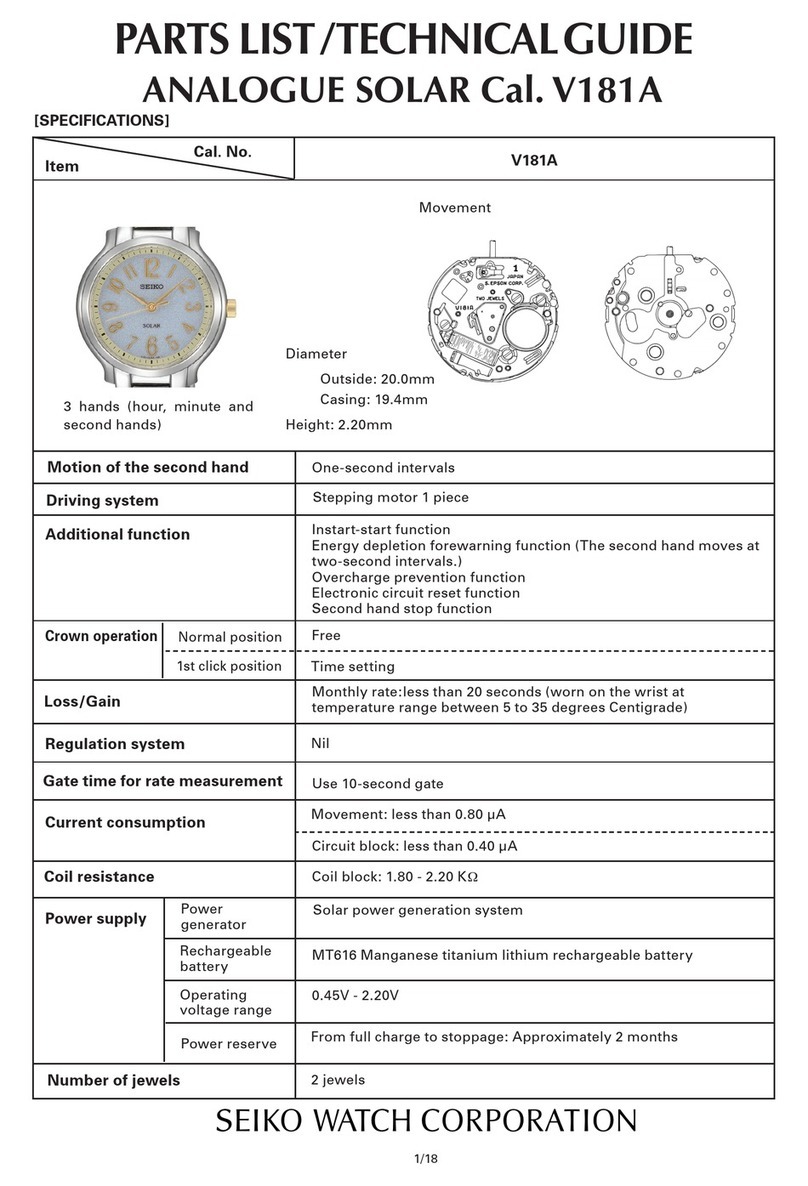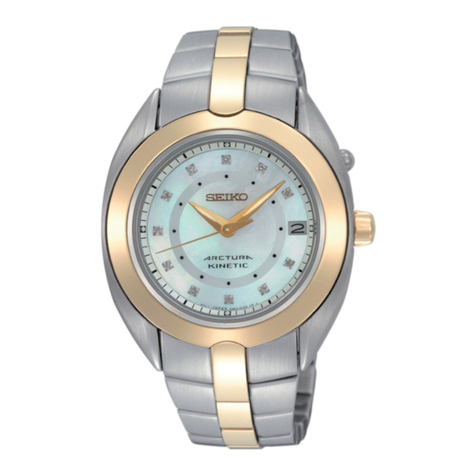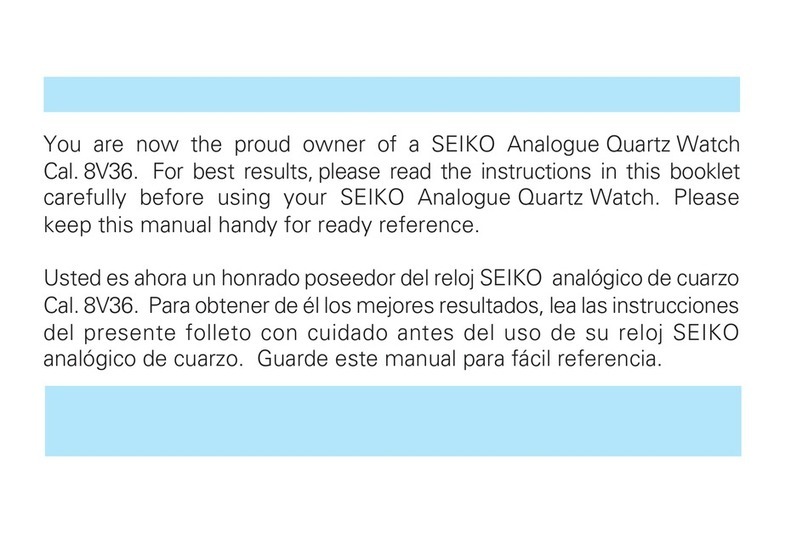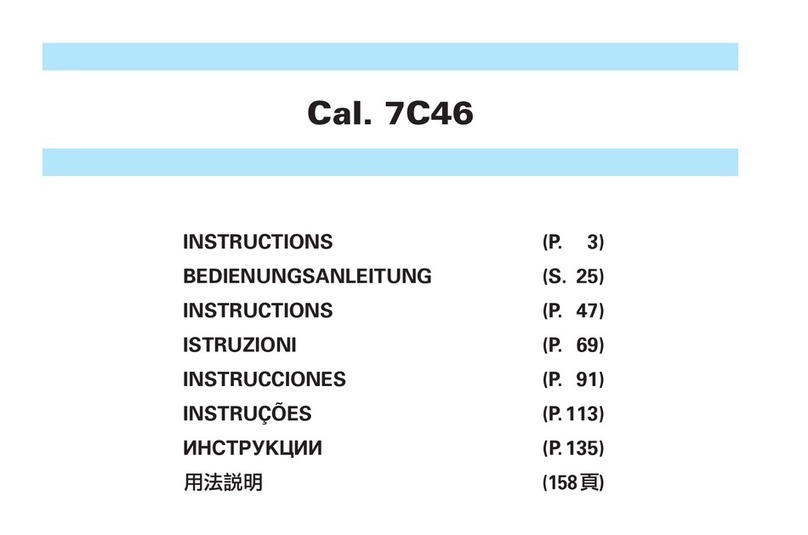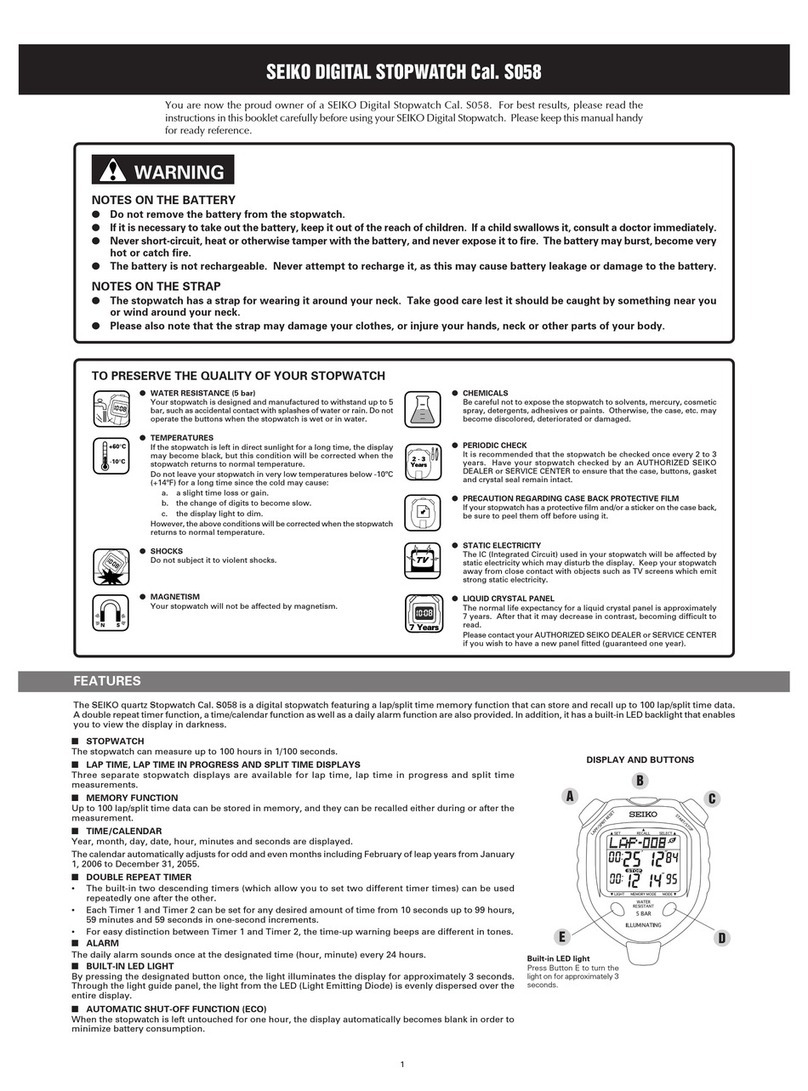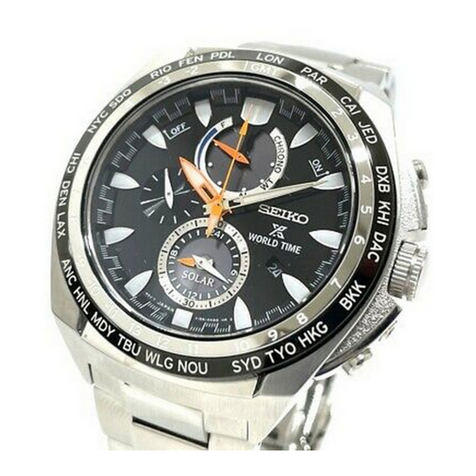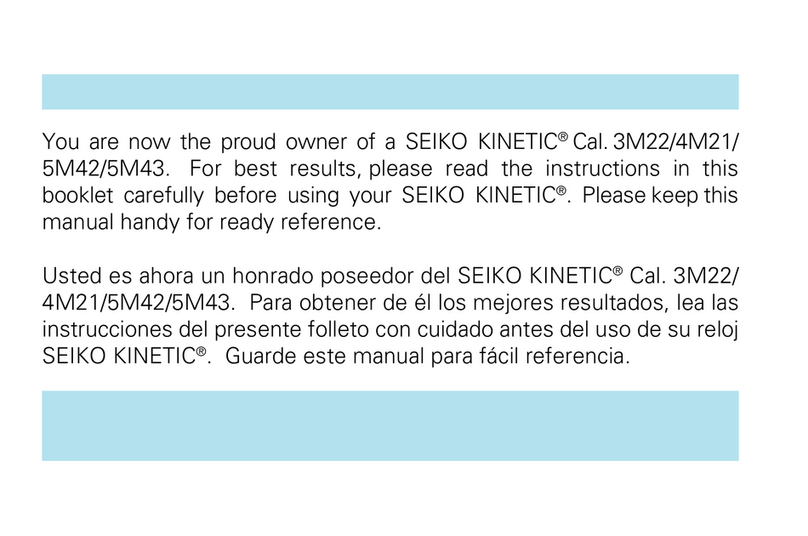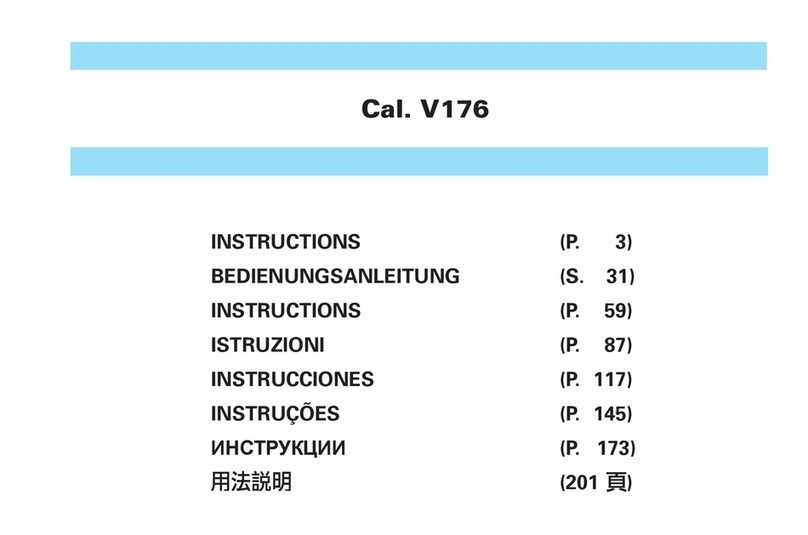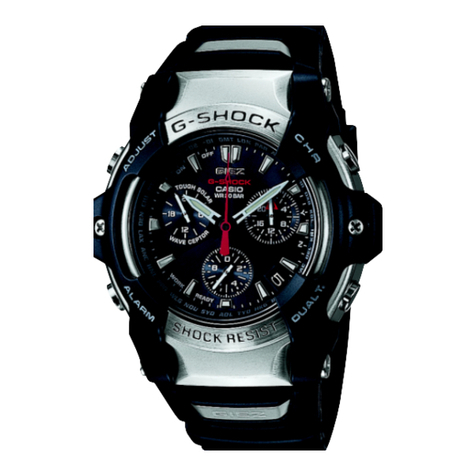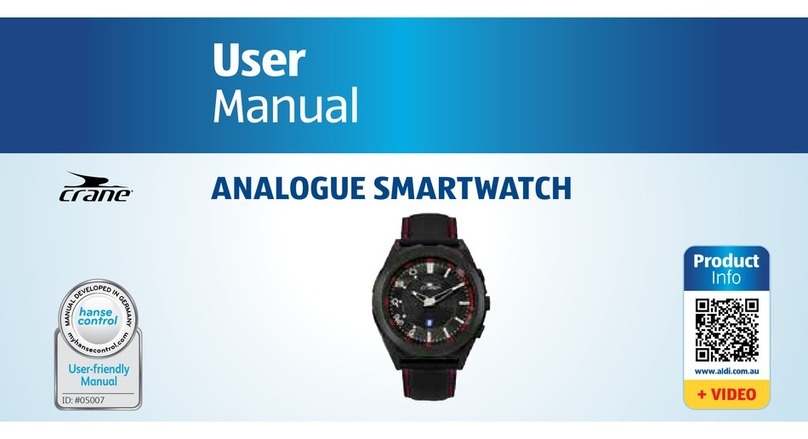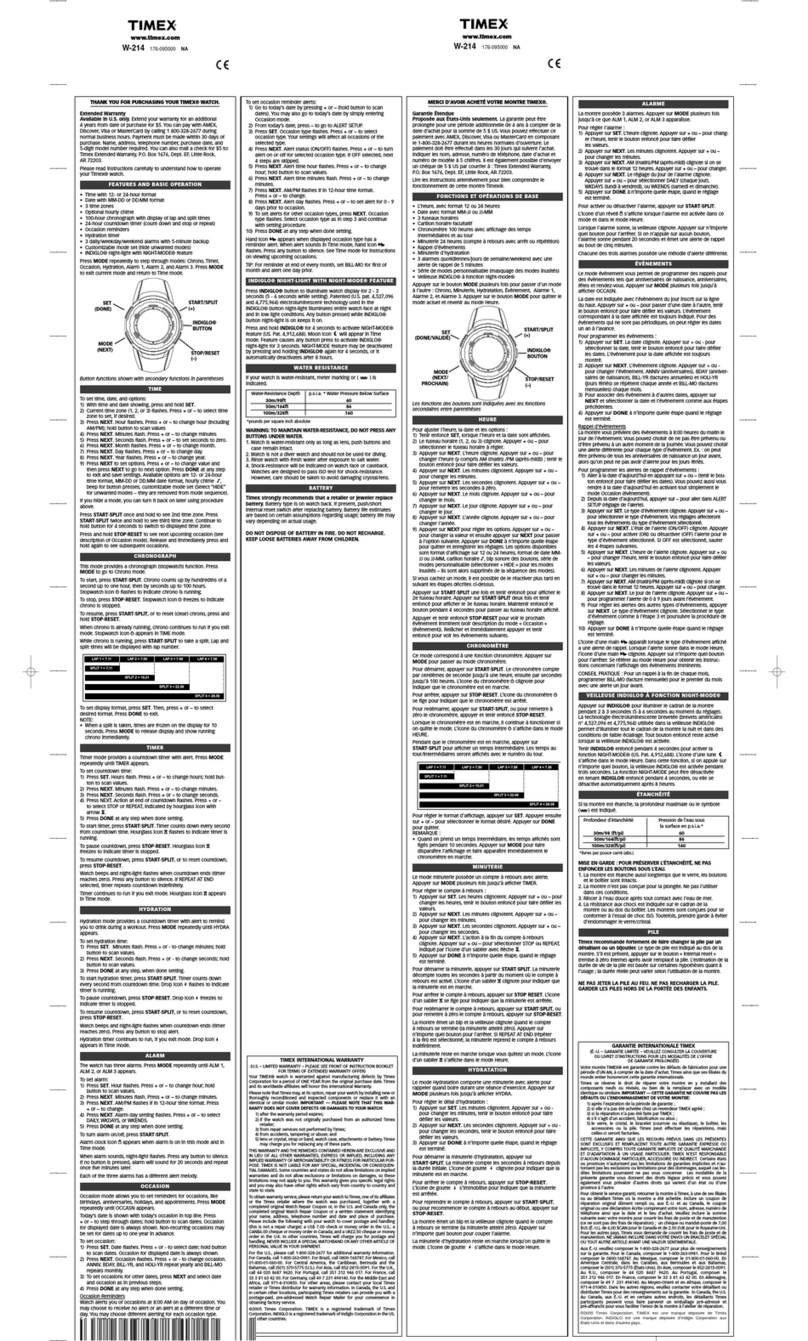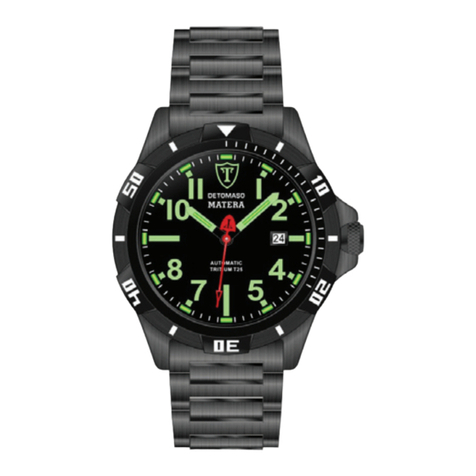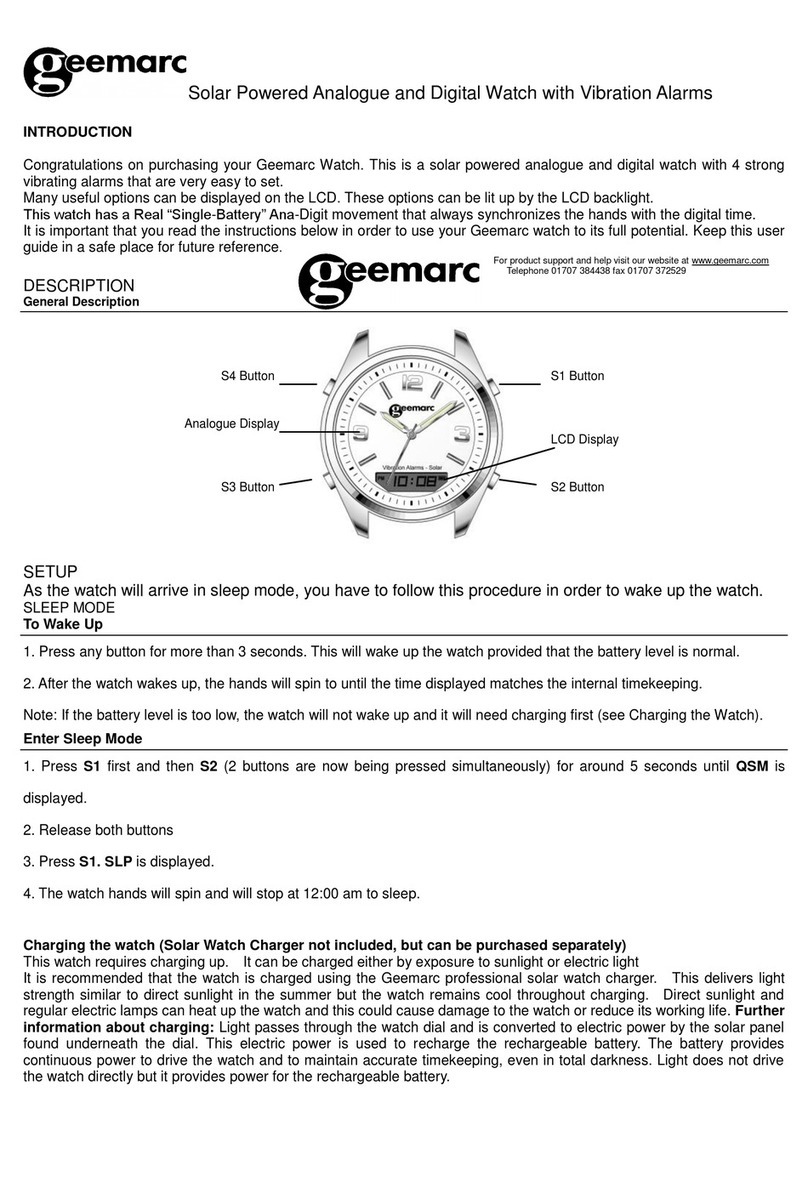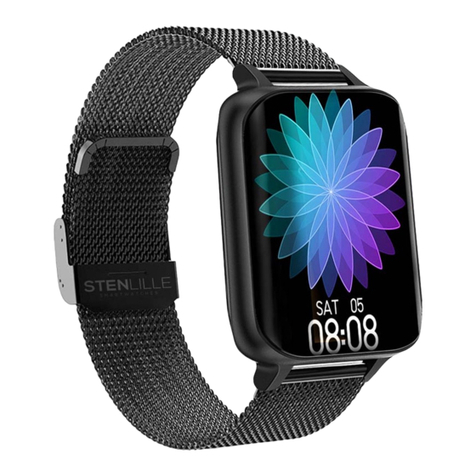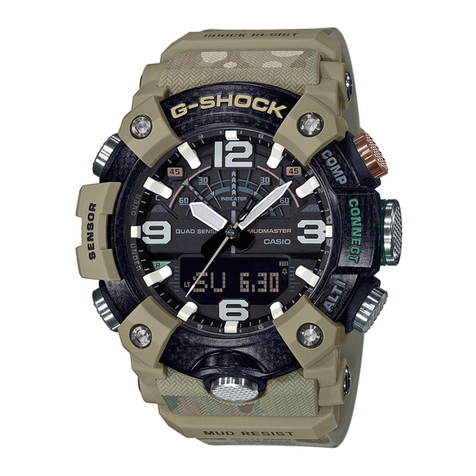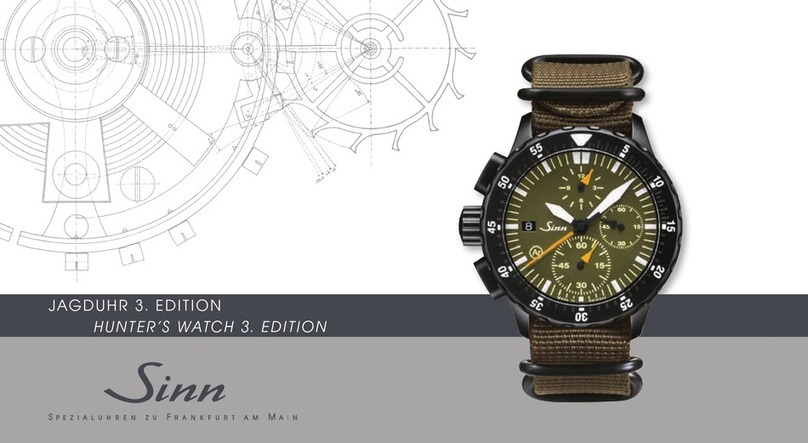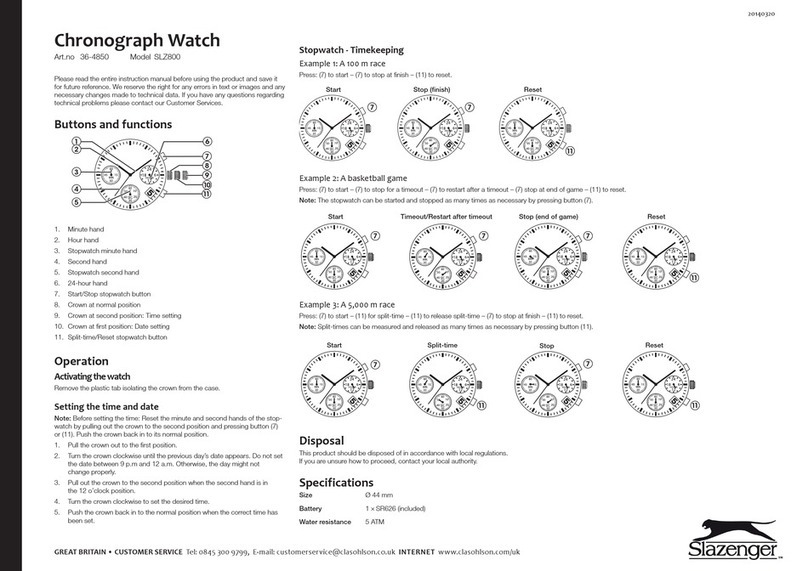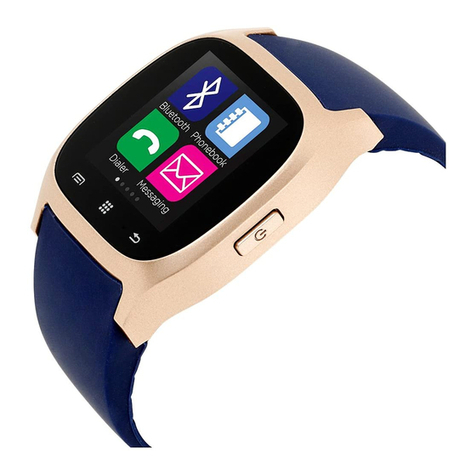
1110
* Before using a water resistant 5, 10, 15 or 20
bar watch in water, make sure the crown is
pushed in completely.
Do not operate the crown when the watch is
wet or in water. If used in sea water, rinse the
watch in fresh water and dry it completely.
* When taking a shower while wearing a water
resistant 5 bar watch, or taking a bath while
wearing a water resistant 10, 15 or 20 bar
watch, make sure to observe the following:
• Do not operate the crown when the watch
is wet with soapy water or shampoo.
• If the watch is left in warm water, a slight
time loss or gain may be caused. This
condition, however, will be corrected when
the watch returns to normal temperature.
Your watch works with stable
accuracy in a temperature range of
5°C and 35°C (41°F and 95°F).
[for analogue quartz watches only]
Temperatures over 60°C or 140°F (50°C or 122°F
for some calibres) may cause battery leakage or
shorten the battery life.
Do not leave your watch in very low temperatures
below –10°C or +14°F (-5°C or +23°F for some
calibres) for a long time since the cold may cause
a slight time loss or gain.
However, the above conditions will be corrected
when the watch returns to normal temperature.
General light activities will not affect
your watch, but be careful not to drop
your watch or hit it against hard
surfaces, as this may cause damage.
NOTE:
Pressure in bar is a test pressure and should not
be considered as corresponding to an actual diving
depth since swimming movements tend to increase
the pressure at a given depth. Care should also
be taken when wearing and diving into water.
+60°C
-10°C
■SHOCKS & VIBRATION
■TEMPERATURE RANGE
●
Non-water resistance
If “WATER RESISTANT” is not
inscribed on the case back, your watch
is not water resistant, and care should
●
Water resistance (3 bar)
If “WATER RESISTANT” is
inscribed on the case back, your
watch is designed and
manufactured to withstand up to 3 bar, such as
accidental contact with splashes of water or rain,
but it is not designed for wearing while swimming
or diving.
●
Water resistance (5 bar)*
If “WATER RESISTANT 5 BAR”
is inscribed on the case back, your
watch is designed and manu-
factured to withstand up to 5 bar and is suitable
for wearing while swimming, yachting and taking
a shower.
■WATER RESISTANCE
●
Water resistance
(10 bar/15 bar/20 bar)*
If “WATER RESISTANT 10 BAR”,
“WATER RESISTANT 15 BAR” or
TO PRESERVE THE QUALITY OF YOUR WATCH
“WATER RESISTANT 20 BAR” is inscribed on the
case back, your watch is designed and
manufactured to withstand up to 10 bar/15 bar/20
bar, respectively, and is suitable for wearing while
taking a bath or shallow diving, but not for scuba
diving. We recommend that you wear a SEIKO
Diver’s watch while scuba diving.
be taken not to get it wet as water may damage the
movement. If the watch becomes wet, we suggest
that you have it checked by an AUTHORIZED SEIKO
DEALER or SERVICE CENTER.
5 bar WR
10/15/20
bar WR




